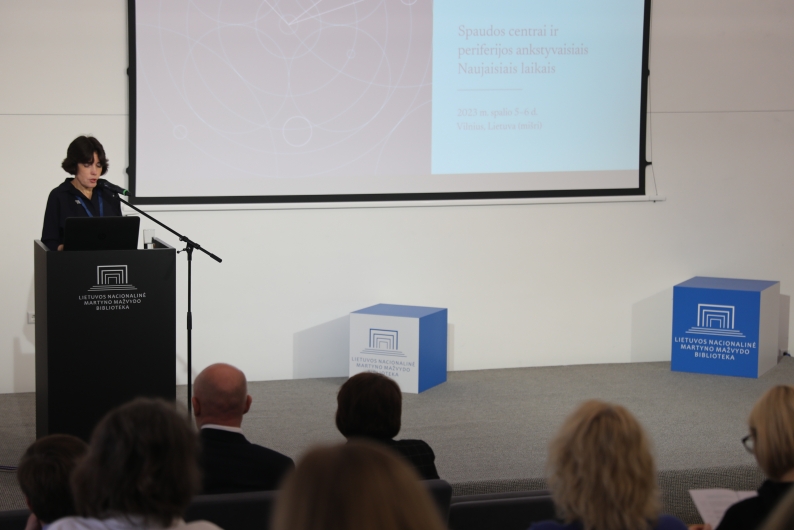

 10 October 2023
10 October 2023
On October 5–6, the Martynas Mažvydas National Library of Lithuanian hosted an international conference “Printing Centers and Peripheries in the Early Modern Period“, dedicated to the 700th anniversary of Vilnius. The conference brought together researchers to present papers and share insights on the culture, history, and application of digital humanities to the old book, to analyze the circumstances of the formation of printing centers and peripheries and the relationship between them across continents and cultures, and to explore the roles of authors, publishers, distributors, readers, and preservers in the creation and distribution of the printed book.
The capital of Lithuania, during the period in question and on its anniversary this year, was characterized by a high degree of religious and cultural tolerance. A wide range of ideas and attitudes flourished here, which encouraged the establishment of printing houses and the popularization of books in the Grand Duchy of Lithuania. As a periphery of the European press, Vilnius was able to establish itself as a center of book printing and dissemination, influencing publishing in neighboring countries.
Opening the event, Prof. Dr. Renaldas Gudauskas, Director General of the Martynas Mažvydas National Library of Lithuania, pointed out that the theme of the conference is very important from the point of view of the history of the book and in the context of the celebration of the 700th anniversary of our beloved Vilnius. The representatives of the partnering institutions welcomed the conference participants: Dr. Kristian Jensen, Chairman of the European Consortium of Research Libraries (CERL), and Dr. Rasa Antanavičiūtė, Director of the Vilnius Museum.
K. Jensen welcomed the cooperation between the various national institutions and the fact that the objectives of the conference and the rich program are in line with CERL’s aims to make Europe’s printed heritage more widely accessible, usable, and preserved. R. Antanavičiūtė was glad that Vilnius is of interest not only to Lithuanian researchers but also to researchers from other countries. She pointed out that Vilnius, which is celebrating its 700th anniversary this year, was almost half its age at the time of the conference.
This time, the National Library has truly become an international center for the history of publishing, old book researchers, digital humanities, and those interested in these topics. The conference featured a plenary lecture and 33 presentations, both live and virtual, by researchers from 14 countries: Belgium, the Czech Republic, Estonia, Germany, Greece, Italy, Latvia, Lithuania, Poland, Romania, Slovakia, Sweden, Ukraine, the United Kingdom, and the United States. The plenary lecture “Centers and Peripheries, Large and Small, Public and Private, Religious and Secular: the Equalizing Role of the MEI” was given by Cristina Dondi, a researcher at Oxford University. The conference was available to watch both live and on Zoom and Teams.
The opening of the exhibition “URBS: People and Books” was an important part of the conference program. The exhibition highlights the most important events in the early Vilnius press, highlights the more interesting and significant cases, and gives a glimpse behind the scenes of the press in different periods.
The project is funded by the Lithuanian Council for Culture’s Vilnius 700 project.
Project partners: European Consortium of Research Libraries (CERL), Osolinsky National Institute, Vilnius Museum.
The speakers and abstracts are available here.
More about the exhibition “Urbs: People and Books” exhibition.



